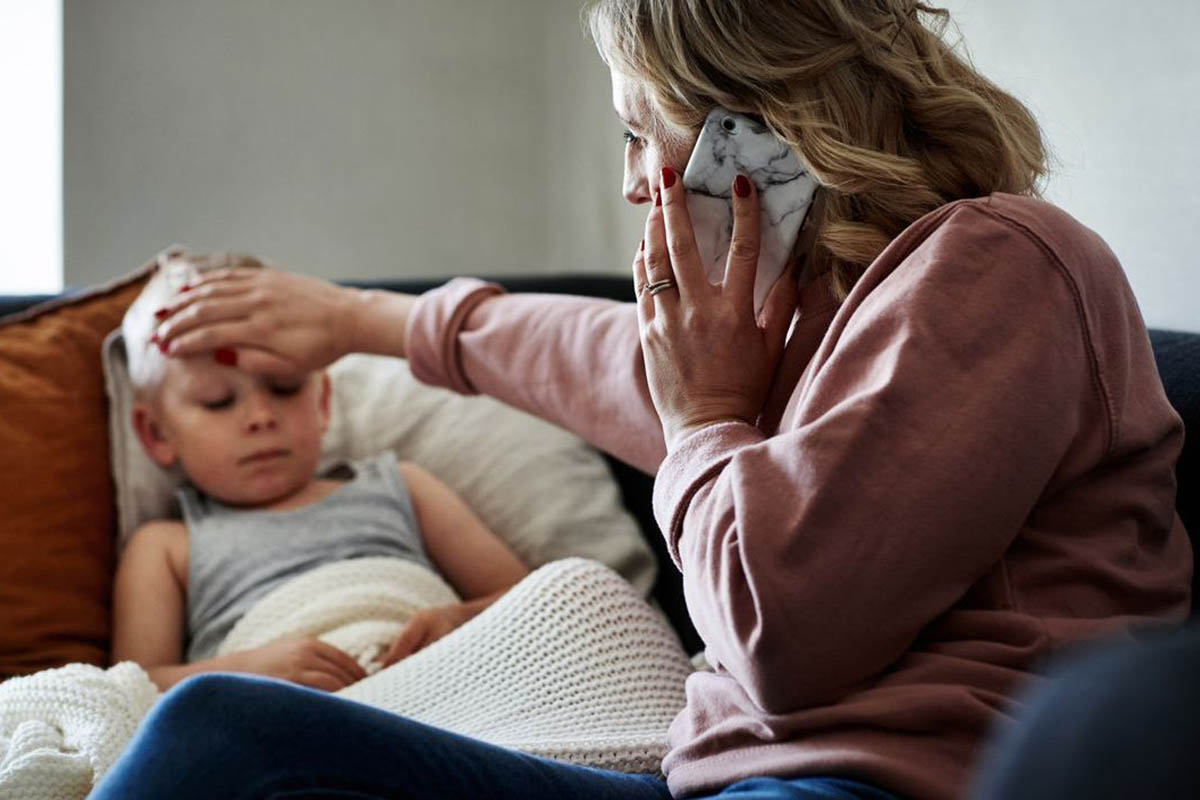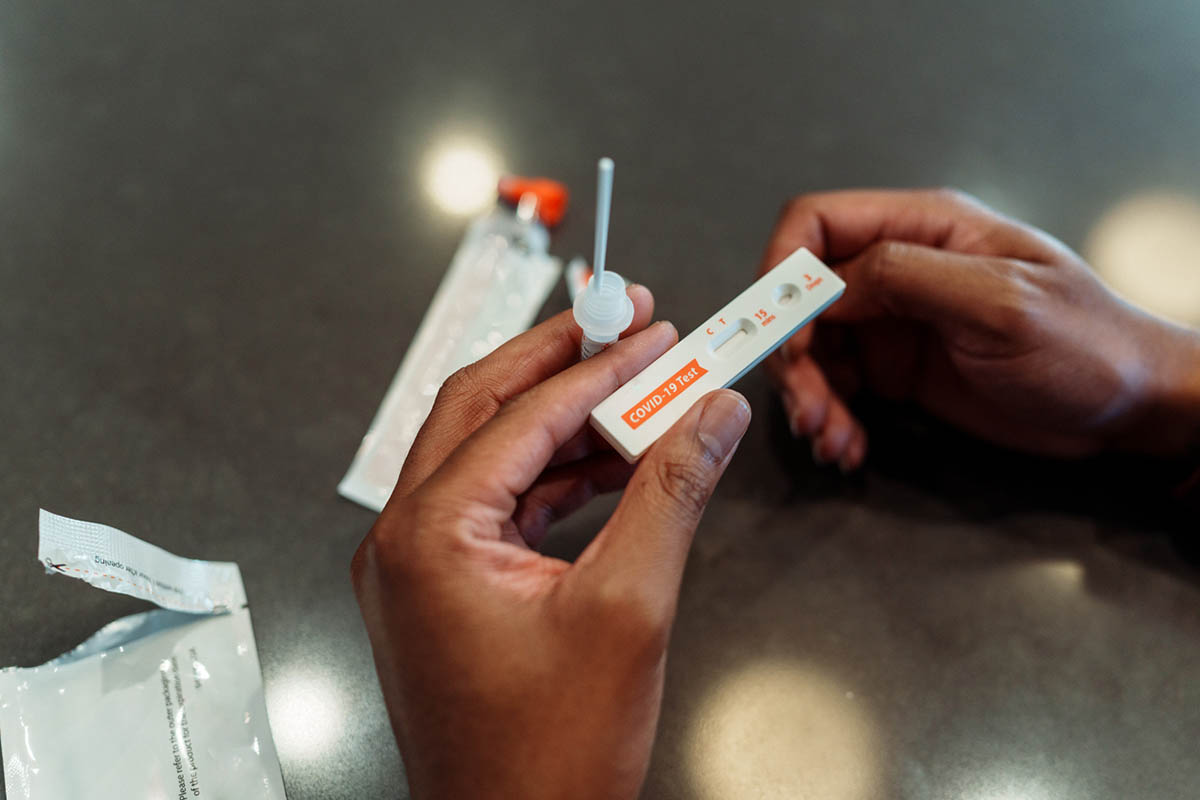
Prim Care Companion CNS Disord 2022;24(1):21cr03129
To cite: Uvais NA, Mitra S. Gender incongruence unmasked by manic switch during COVID-19 infection. Prim Care Companion CNS Disord. 2022;24(1):21cr03129.
To share: https://doi.org/10.4088/PCC.21cr03129
© Copyright 2022 Physicians Postgraduate Press, Inc.
aDepartment of Psychiatry, Iqraa International Hospital and Research Centre, Calicut, Kerala, India
bMonash Health and School of Medical Sciences, Monash University, Melbourne, Australia
*Corresponding author: N. A. Uvais, MBBS, DPM, Iqraa International Hospital and Research Centre, Malaparamba, Calicut, Calicut, Kerala 673009, India ([email protected]).
The desire to live and be accepted as a member of the opposite sex, with readiness to change the body as congruent, is called gender incongruence (previously called transsexualism).1 The concept has been evolving rapidly for the last few decades. The ICD-10 conceptualizes gender identity disorders as an independent group of disorders of sexual inclination and sexual dysfunctions and requires at least 2 years and the absence of another mental disorder or a chromosome abnormality.2 However, recent debates while drafting the ICD-11 received substantial support favoring reconceptualization of transsexualism as a condition relating to sexual health.2 Moreover, the ICD-11 renamed transsexualism as gender incongruence with an intention to destigmatize and depathologize gender identity issues, defined by a marked and persistent incongruence between the gender felt or experienced and the gender assigned at birth.2
Rarely, gender identity symptoms can appear as a part of an ongoing psychotic disorder such as schizophrenia and bipolar disorder.1 ICD-10 research criteria mandate that gender identity symptoms secondary to the ongoing psychosis should be excluded to establish the diagnosis.
Here, we report a rare case of suppressed gender incongruence, which was unmasked as a part of manic disinhibition. Although the gender identity symptoms were expressed during the manic phase of illness initially, it persisted even after resolution of manic symptoms.
Case Report
A 22-year-old unmarried Muslim woman visited the outpatient psychiatry department, accompanied by her mother, with symptoms of 2 months duration characterized by low mood, reduced interest, anhedonia, lack of concentration, lack of confidence, reduced sleep and appetite, and crying spells. There were no significant life stressors. There was a history of repetitive thoughts and behavior since childhood, predominantly repetitive thoughts of dirt and contamination, doubts regarding religious beliefs, and compulsive washing behavior. There was no history of past psychiatric treatment and no family history of psychiatric illness. There was no medical comorbidity.
The patient’s mental status examination revealed reduced speech productivity, depressed affect, depressive cognition, and obsessive doubts regarding religious beliefs. She was diagnosed with obsessive-compulsive disorder, mixed type with moderate depressive episode according to ICD-10 criteria. She was started on oral fluoxetine 20 mg/d. During initial follow-up after 2 weeks, she reported improvements in depressive symptoms; however, the obsessive symptoms persisted. Hence, fluoxetine was increased to 40 mg/d, and she was scheduled to return for follow-up in 3 weeks. The patient tested positive for coronavirus disease 2019 (COVID-19) on the day of the scheduled appointment, and she was home quarantined. The medications were stopped due to lack of availability.
However, a new set of symptoms appeared within 2 days of becoming infected with COVID-19, which were characterized by excessive talk, tall claims, overactivity, sexual disinhibition, reduced need for sleep, and irritability. She also started expressing her wish to live like a male. She started dressing like a male and cut her hair short. She proposed marriage to her close female friends, which offended many of them. She also contacted a religious teacher to ask about religious laws regarding sex reassignment surgery, and despite stated restrictions, she decided to go ahead with it.
She was diagnosed with bipolar affective disorder, mania and was started on oral sodium valproate 700 mg/d, which was gradually increased to 1,000 mg/d, and oral olanzapine 5 mg/d, which was gradually increased to 10 mg/d. Her manic symptoms improved over the next month.
Initially, gender dysphoria was considered as a part of the manic process. However, these symptoms persisted even after full recovery from mania.
During the euthymic phase, she said that she always had the wish to change her gender and never felt any sexual attraction to males. She had been studying about sex reassignment surgery for the past 5 years but never got the courage to express it to others due to social stigma. However, she expressed her inability to again live and dress like a female and was considering surgery to remove her breasts so that she would look more like a male. She maintained capacity during such discussions, and there was no evidence that this was a manifestation of an affective disorder.
Discussion
The diagnosis of bipolar affective disorder in young people is often complicated by the appearance of depressive symptoms at the onset, with bipolarity coming to light with an inadvertent switch on antidepressants. Obsessive-compulsive symptoms are not uncommon during such initial depressive phases. Further, mania is commonly associated with disinhibition.
What is interesting in this case was the subsequent interactions between societal forces, nature, and culture. By nature, manic disinhibitions last only for the duration of symptomatic illness and disappear when the person gains insight. Gender incongruence in the context of mania is rarely reported in the literature. The descriptions are largely in the context of acute symptomatic states that resolved with improvements in manic symptoms.1,3,4 But, for our patient, that disinhibition left in its wake an exposition of her discomfort with her assigned gender.
Sex is a taboo subject in most Indian societies. Feelings about love and sex are often consciously hidden, sometimes to the detriment of everyone involved. Further, there is a layered approach to this phenomenon, depending on the economic, religious, educational, and political situation of the individual. Our patient had gender incongruence for the past 5 years—since her late teens—but was unable to voice such feelings, perhaps deterred by societal forces.5 Considering her upbringing in a rural setting, where discussions about gender incongruence are considered taboo, manic disinhibition was probably the only hope for her to be able to voice her wishes, which she did. The confidence and psychomotor energy associated with mania might have provided her with the impetus to go ahead with her plans to change her dress and hairstyle, and the family might have accommodated this expression, thinking of it as related to her disorder. When the manic symptoms receded, the patient felt more comfortable to express her sexuality, as she had inadvertently let everyone know.
It is uncertain if the COVID-19 infection influenced the course of her illness. There are a few reports6,7 of manic episodes precipitated by COVID-19 infection in the literature, but nothing to corroborate our hypothesis. The result was that she gained the ability to assert her sexuality as she wished, and society was accepting.
In clinical terms, gender incongruence symptoms in the setting of mania can also be an unmasking of underlying long-lasting concerns, which have been stifled by society. Psychiatrists should be aware of this scenario so that proper future treatment strategies for gender incongruence can be planned in consultation with the patient and not be brushed aside as “just another symptom.”
Received: September 5, 2021.
Published online: February 3, 2022.
Potential conflicts of interest: None.
Funding/support: None.
Patient consent: Consent was received from the patient to publish this case report, and information has been de-identified to protect anonymity.
References (7)

- Habermeyer E, Kamps I, Kawohl W. A case of bipolar psychosis and transsexualism. Psychopathology. 2003;36(3):168–170. PubMed CrossRef
- Reed GM, Drescher J, Krueger RB, et al. Disorders related to sexuality and gender identity in the ICD-11: revising the ICD-10 classification based on current scientific evidence, best clinical practices, and human rights considerations. World Psychiatry. 2016;15(3):205–221. PubMed CrossRef
- Chakrabarti N, Sinha VK, Parial A. Secondary gender identity disorder: a case report. Indian J Psychiatry. 1999;41(3):257–259. PubMed
- Heare MR, Barsky M, Faziola LR. A case of mania presenting with hypersexual behavior and gender dysphoria that resolved with valproic acid. Ment Illn. 2016;8(2):6546. PubMed CrossRef
- Nathvani M, Saini VK, Gehlawat P. Sociocultural barriers in management of gender dysphoria: a case report. Indian J Psychiatry. 2021;63(1):106–107. PubMed CrossRef
- Lu S, Wei N, Jiang J, et al. First report of manic-like symptoms in a COVID-19 patient with no previous history of a psychiatric disorder. J Affect Disord. 2020;277:337–340. PubMed CrossRef
- Mawhinney JA, Wilcock C, Haboubi H, et al. Neurotropism of SARS-CoV-2: COVID-19 presenting with an acute manic episode. BMJ Case Rep. 2020;13(6):e236123. PubMed CrossRef
Please sign in or purchase this PDF for $40.
Save
Cite



